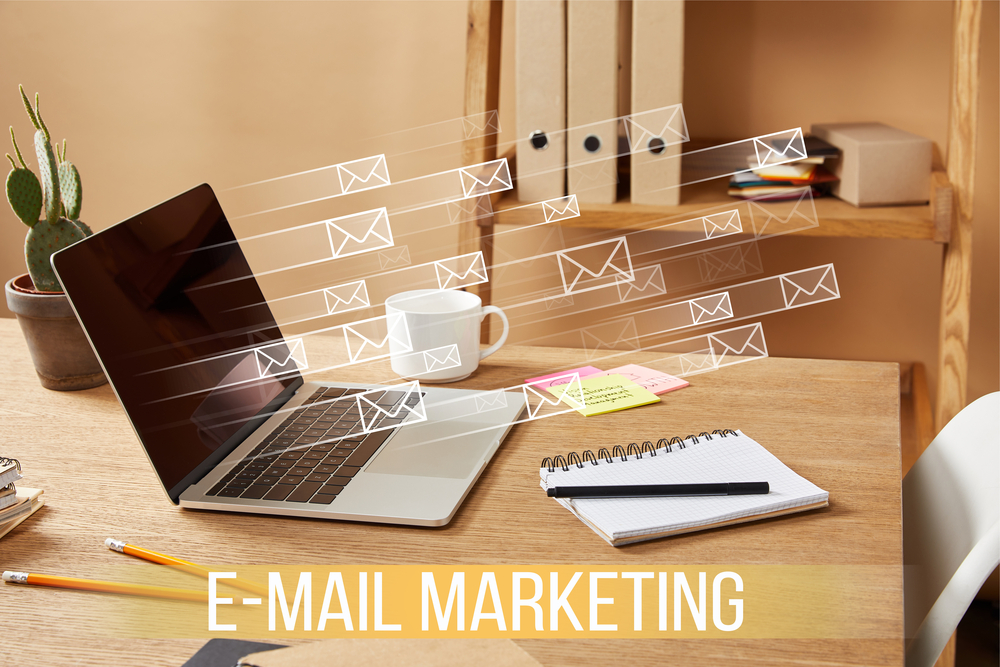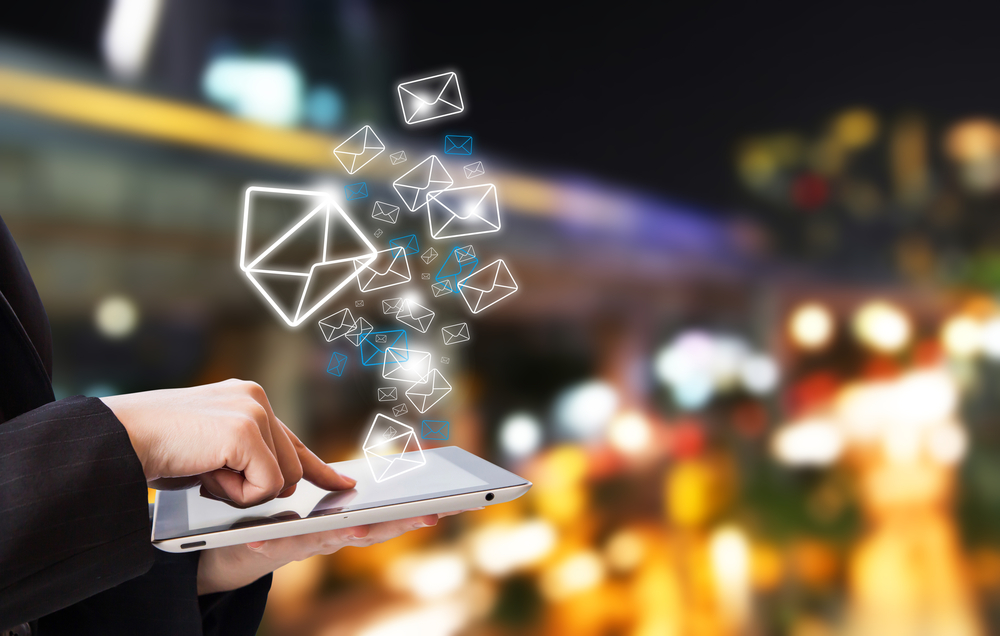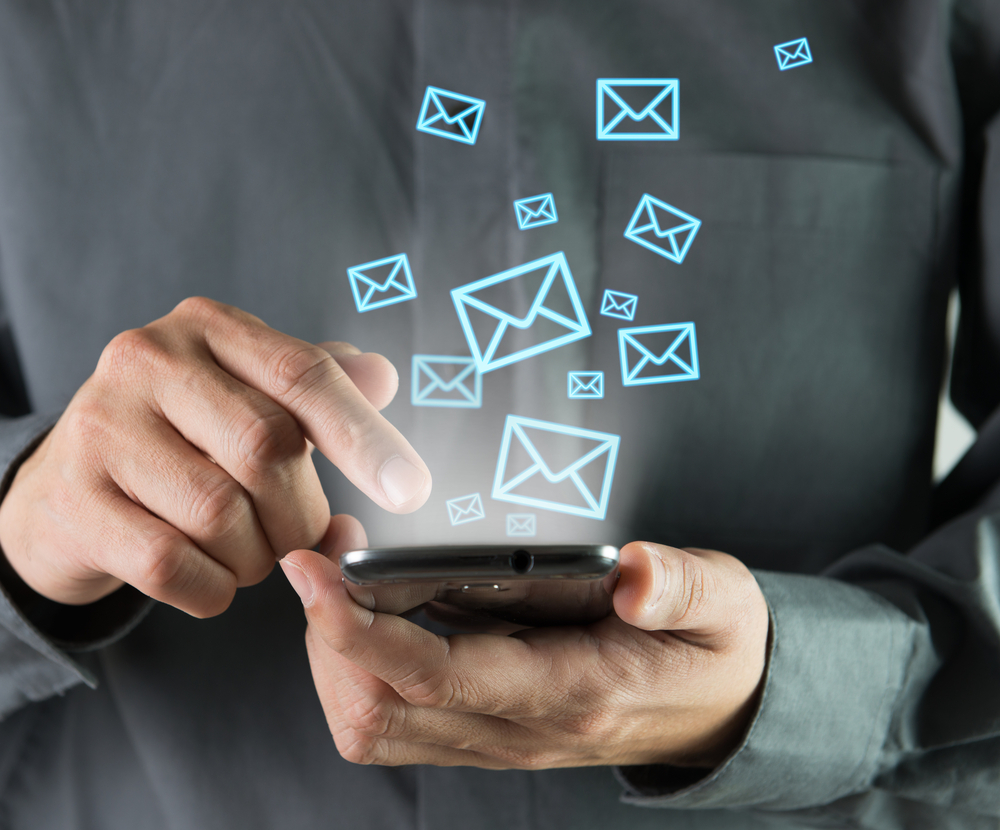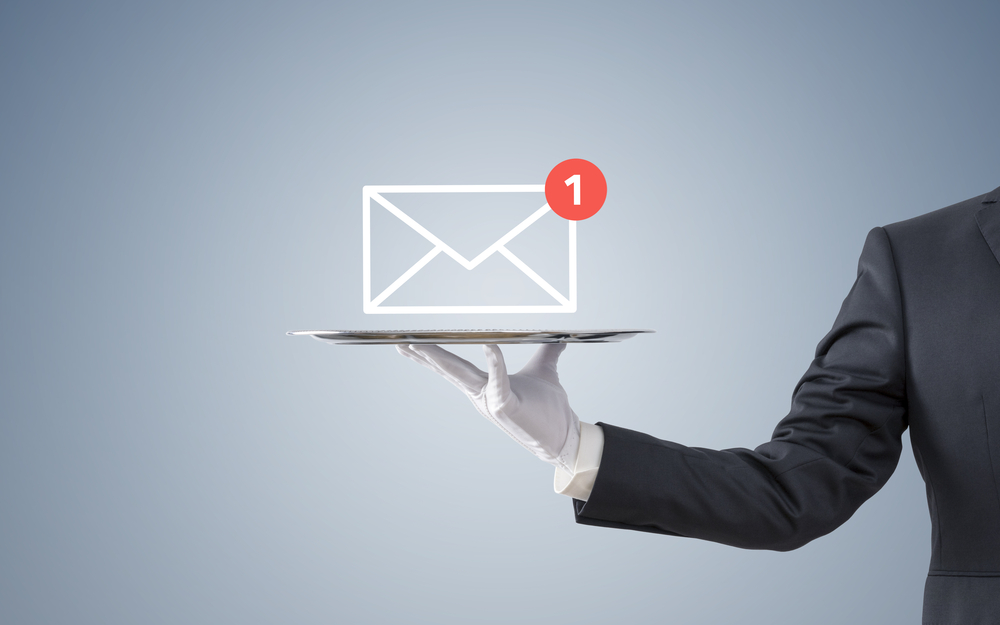Every day, more than 300 billion emails are sent.
By 2025, this figure is expected to reach 376 billion emails per day.
Email marketing has evolved over the years.
What worked 5 years ago no longer works.
It’s a crucial part of any strategy.
Email marketing is the preferred marketing channel for many of the best online marketers.
Why?
It’s because it brings in the results and delivers the best marketing ROI.
That’s right!
Email marketing is more effective than all other online marketing strategies including SEO, content marketing, and PPC!
email is an essential part of any marketing campaign. Email is a cost-effective method to reach out to your customers, promote your product and communicate with them.
can return an average of 42 dollars for every dollar spent on email marketing.
Email campaigns and email lists have also seen an increase of 760% in revenue.
It’s not bad at all, is it?
We will show you how to use email marketing to get extraordinary results.

5 strategies for better email marketing campaigns
Email marketing will be your most crucial channel if you use these strategies.
Let’s get started.
1. Personalize your messages
We don’t mean to send a personalized email to every subscriber. Personalization is the process of creating a customized message using customer information.
Amazon is a great example of an organization that excels at personalization.
Amazon emails are all personalized.
The correct phrase is “Dear Steven”, not “Dear valued client”.
You don’t say “You may like these… (randomly created)”, you say “You may like these… (based on my previous purchases).
Email marketing isn’t just another channel for Amazon. Email marketing is essential to the overall experience of the customer.
Jeff Bezos is the CEO of Amazon. He’s an email master. Jeff Bezos is a master of email. He has even been known to read customer complaints. This is also why 35% or more of all product sales are a result of recommendations (both by email and screen).
Email marketing revenues will total $9.62 billion by 2023.
Personalization has had a positive impact on many businesses, not just Amazon.
Experian has found that personalized email delivers 6x higher conversion rates.
We can all understand this by breaking it down into numbers:
According to research, email marketing generates $0.08 per email.
It may not seem like much…
If you send an email to 500,000 subscribers, you can earn up to $40,000.
What a great deal of extra revenue!
If you personalize your emails, then you can expect to be much more!
According to Research:
Every $1 invested in personalization generates $20 ROI.
What a great revenue opportunity!
What’s the best part?
70% of brands don’t use personalization in their email marketing strategies.
By personalizing your email, you will stand out from the competition.
Addressing the reader by their name is the easiest way to personalize. This is a feature that most email service providers offer. It will boost the performance of your campaign.
For instance, subject lines of emails personalized with the recipient’s name can increase opening rates by between 10-14%.
47% of all emails are opened based on the subject line. This is a great way to increase your email’s visibility.
Here are some tips for personalization that go beyond using the name of your customer:
- Get the information you need upfront. Personalization begins long before the “send” button is pressed. All begins with the sign-up form. You will have very few options for personalized communication if you don’t provide data like name, company, and location. Ask for only the information that you need and not the information you desire. This is just one-way GDPR impacts marketing teams.
- Use a real reply-to email address: When you use donotreply@example.com, it takes away the authenticity of the messaging. You want to encourage your readers to respond to and engage with your campaigns. A real reply address improves credibility and makes it appear more personal.
- Use a real email signature. Just as you would use a real reply to an email address, it is important to include real contact information in your email. The best way to achieve this is by including your contact details within your email signature. It’s a good way to build relationships with your readers and to give them the option to connect or contact you online.

2. Segment your subscribers
Segmentation ranks second in the list of top initiatives for email marketers this year.
Why is it so high?
When you segment your database your email campaigns will be much more targeted.
Take a look at this example:
You are hosting a small business networking event within a radius of 20 miles.
How can you ensure that your event is a success?
segmentation is the answer.
Sending an email invitation to small business owners who live within 20 miles of your event is the best way to encourage them to attend your event.
CRM software makes it easy to segment data.
Imagine sending a single email to all your subscribers, spread out across the entire country (or continent).
What is more annoying than receiving an invitation to an event located in another country?
It is very irritating!
Let’s look at the value of your database before you begin segmenting it.
According to a recent study, all email marketing KPIs are better achieved when your email list is segmented.
Segmentation results in increased performance.
Segmenting your lists will improve your open rates and increase revenue, leads, transaction, and customers.
According to research by Campaign Monitor segmented emails lead to an increase of 760% in revenue for companies.
Segmentation is also a great way to integrate GDPR with email marketing.
Does it work, though?
Yes!
This is an example of our email marketing campaign:
Recently, we sent out two email campaigns. Both campaigns used the same subject line, and both had the same content.
The first campaign was sent out to our non-segmented list of email addresses, while the second one was sent to a segmented list.
The first email that was not segmented received a 42 % opening rate and a click-through rate of 4.5%.
The segmented campaign received an open rate of 94% and a click-through rate of 38%!
Would you say that it is valuable?
Why do so many marketers segment their email?
Wrong.
9 out of 10 email marketers do not segment their databases.
Here are some examples to help you get started:
- Segmentation by Industry: Are you offering services and products for businesses or consumers only? Segmenting your email campaigns by industry is an excellent way to target your subscribers. A business that sells auto parts, for example, would be more engaged if it received email campaigns about car products than a company that sells computer software.
- Segment based on company size. Also known as Account-based Marketing. Segmenting email campaigns based on company size or revenue can be a great method to increase response rates. A business with 5 employees is unlikely to be ready for the largest industry conference of the calendar year. However, a company with 750 employees might be.
- Segmentation by sales cycle: Early-stage buyers are not ready for an aggressive pitch or one-to-one demo. However, they would be more receptive to receiving an industry research paper. Buyers who are more ready to purchase will be interested in free trials or webinars about the product.

3. Send mobile-friendly emails
In 2022, 46 percent of all marketing emails were opened on mobile devices.
What are your first actions when you awaken?
You probably have your phone right next to your bed, and you check it first thing in the morning for messages, calls, and, yes, even emails.
You’re not alone. 58% do this.
What do you suppose they will do when you send them an email that isn’t optimized for their device?
Most will unsubscribe from it or delete it.
Why is it that still, almost half of the emails are not mobile-friendly?
Even worse, we found in our research that 20% of email campaigns were not optimized for mobile.
can generate huge revenue when emails are optimized for mobile.
According to Yesmail, the average revenue per mobile click is $0.40. This is 4x more than a desktop email.
Mobile email revenue is four times higher than desktop.
After receiving a promotional message on their mobile, half of the users purchased a mobile site.
79% of B2B marketers say that email is their most effective channel for sharing content.
How can you optimize your mobile campaigns?
Here are some helpful tips to help you.
- Implement responsive design (RED). Creating a Responsive Email Design ensures that the user’s experience is optimized, regardless of what device or screen the user uses. This solution is offered by most email service providers.
- The subject line and preheader should be kept short. Keep it brief so that the reader understands the topic of the email. Don’t waste the pre-header (also called snippet text) by using “To View This Email in Your Browser …”. You can summarize the email instead or include an action call (e.g. “FREESHIP”, to get free shipping).
- Make your CTA large and clear: Mobile device sizes vary. A text link might work on a larger tablet screen or tablet, but you could alienate your readers with a smaller screen. If your call to action is too small, you may alienate readers who have a smaller screen (or larger hands!) Make your call to action bold, large, and easy to click.

4. Test copy, buttons, and design
Testing is a great way to gather data that can be used to improve your marketing.
Email marketing is no exception.
A/B testing is a common practice for email marketing. Nearly 60% of marketers regularly conduct these tests.
You’ve probably tested the subject line of your email, right?
Even the former president of the United States A/B-tested his email subject lines…
Do you think I’m joking?
Email marketing was a major factor in Obama’s Presidential campaign.
They were able, based on their results, to estimate the number of donations that they would receive by sending different variations to a sample of subscribers.
When sent to all the databases, the worst performing subject line (“The only thing the polls did right ..”),”) would generate $403,603 in donations.
The subject line that performed best (“I will outspend”) was expected to generate $2,540.866 in donations.
It’s a big difference!
The best-performing subject line exceeded expectations, generating a total of 2,673,278.
This is an extra $2.2 million raised due to the change in email subject lines!
Split-testing the subject line of President Barack Obama’s email raised an extra $2 million in donations
Email marketing is not just about subject lines.
You can also:
- From Address: The email address that appears in “from” has a big impact on the reader’s decision to open your message. The sender’s name is what makes people open an email. Send your campaign from the name of a person, person + company, or CEO.
- Plain Text vs HTML Campaigns: I’m certain you send a plain-text version of your emails, just like most marketers. Have you considered testing an email campaign using only plain text? When you add a personalization element, plain text emails seem to be written for the reader.
- Long emails vs. short emails You can either keep your emails brief and sweet, or you can create detailed long emails. Longer emails may include more detail, while shorter emails send readers directly to the landing page. What is the best way to determine what works? Test it.

5. Automate your email campaigns whenever possible
Emails that are automatically sent based on the user’s behavior are called trigger-based emails.
Trigger emails can be in the form of a ‘welcome email’, a ‘thank-you’ email, or a ‘transactional email’, like an order confirmation email or email receipts.
The data behind trigger emails shows that trigger emails perform better than conventional emails.
Welcome emails, for example, have an opening rate of almost 50% and a click-through rate of nearly 30%.
Not only that.
Trigger-based email can also increase revenue at least by 24 times compared to traditional emails.
Is this too good to true?
Well, it’s not. We’ve tried it. It works!
Here is a comparison between our traditional email campaigns (left) and our triggered emails (right).
Our -triggered emails resulted in 5x more opens and 15x more clicks.
45% of marketers are using trigger-based email today. They can account for as much as your email marketing revenue.
Email marketing is a great place to use trigger emails because they are effective.
You ask, what is the sweet spot for email marketing?
context is the main reason for their success.
Consider the following example:
You browse a website and add products to your cart, but you start to doubt the site and decide to leave without completing the purchase.
Sounds familiar?
Every single eCommerce site experiences this every day.
What if you received an email one hour later that included the exact item you had purchased?
What if the email also included a code for a 10% discount or free shipping?
Aren’t now you more likely to make a purchase?
The power of trigger email
It’s expensive and complicated to set up triggered email, isn’t it?
You don’t need to. To replicate automation, you can use auto-responders within your customer service software. We use this method for all our existing triggered email messages and are happy with the results.
You can use the following examples to trigger your emails.
- Activation The user has created an account, but does not use the product in the first seven days. Create an “activation campaign” that sends an automated email with the login information and steps to get started, as well as containing a video for additional support. You can invite them to an individual meeting where you will walk them through the software and answer their questions.
- Win back An existing customer will soon be nearing the end of their yearly subscription. You need to find a way of bringing back a customer who hasn’t bought your product for 3 months. Create an “email to win back” that will send an automated email to customers who are nearing the end of their contracts with a list of new features of the product and a brief plan of expected releases over the next six months.
- Surprise! Customer Loyalty is key to success. You can also reward loyal customers with freebies every so often. Create a “surprise email” that automatically sends a message to your best clients offering them a free license for your software, a gift certificate, or a coupon to redeem a box of cupcakes. The cost is small, but the rewards are huge.

Conclusion
Email marketing continues to deliver results.
Email marketing has evolved. Email marketing has evolved.
Update your email marketing strategy.
You need to send messages that are targeted. Messages which are optimized for mobile devices and personalized.
Test new elements. Trends are constantly changing, so what was successful 12 months ago might not be effective today. Test everything. When you have a good idea of what works, automate the process by using triggered emails.
. If you use these email marketing tactics, your customers will respond better and your campaign performance will increase.